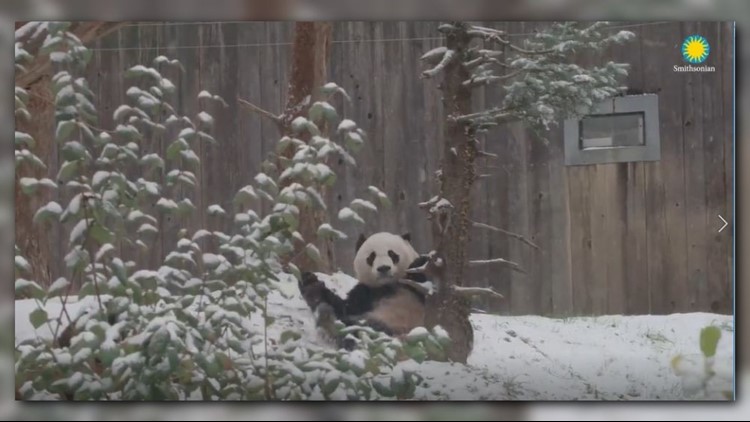WASHINGTON – The Smithsonian’s National Zoo released video Thursday of giant panda Bei Bei tumbling in the snow. In slow motion. Set to music.
The results were perfectly predictable – coworkers and newsrooms stopping everything to behold Bei Bei, as Washington was hit with a wicked winter storm packing more of a punch than expected.
So do pandas in their pampered lifestyles need blankets or extra heating, lest the cold keep them from being cute?
In truth, the giant pandas like Bei Bei are perhaps the most prepared residents of Washington when it comes to winter weather.
As the region welcomes colder temperatures, the National Zoo has also brought in animals that can’t handle winter weather – think tropical Komodo dragons or ring-tailed lemurs.
But most of the animals are able to thrive in outdoor winter settings, especially the zoo’s star attractions.
“The giant pandas are actually more active in the wintertime,” said zoo spokesperson Annalisa Meyer in an interview. “Their indoor habitat is heated, but they come from a climate with cold winters in China, and they love to roll around in the snow.”
More from the Smithsonian’s National Zoo:
- The Zoo’s lions and tigers remain outside in the wintertime, following their normal schedules unless the temperature dips below 40 degrees Fahrenheit.
- Once the temperature drops below this threshold, keepers assess the cats’ behavior, as well as factors such as wind chill and snowfall, to determine whether or not they should go out. Although rock dens in the exhibits are heated during very low temperatures, the tropical Sumatran tigers and lions may be kept inside.
- The Zoo’s cheetahs remain outside in the winter. Termite mounds located throughout the Cheetah Conservation Station are heated and provide the cheetahs a respite from the bite of the winter wind.
- Many of the animals on Asia Trail—including the Asian small-clawed otters—have heated rocks in their exhibit to help keep warm.



